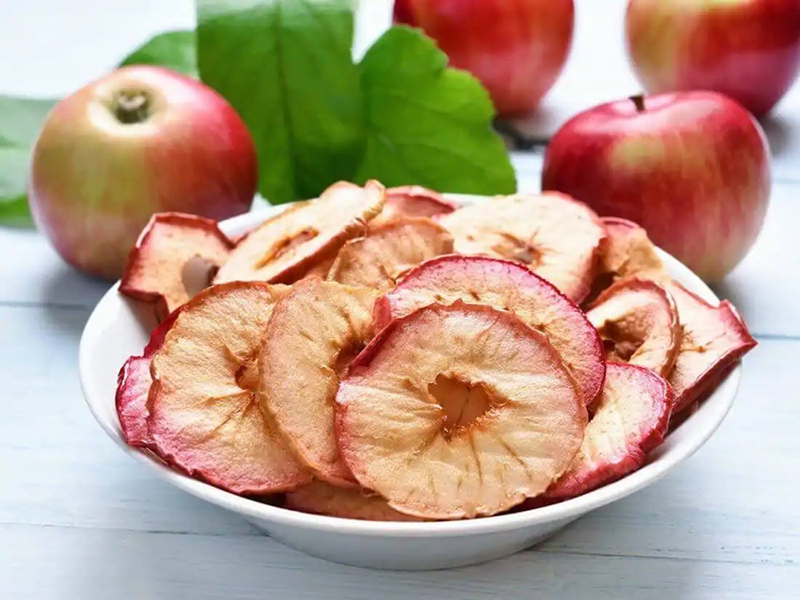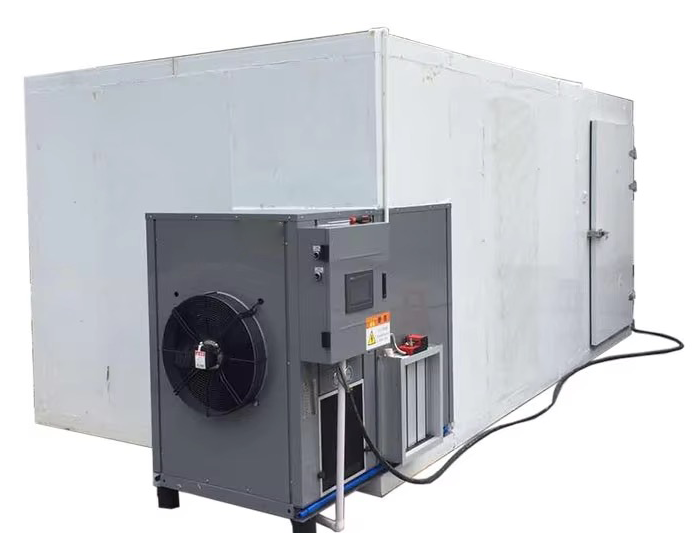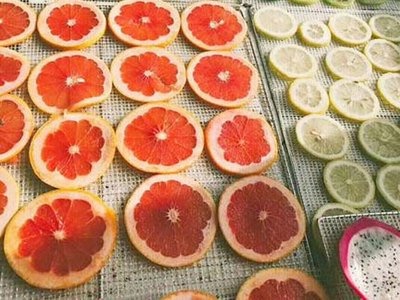
Content Menu
● Understanding Heat Pump Dryers
>> How Heat Pump Dryers Work
● Benefits of Heat Pump Dryers
>> Energy Efficiency
>> Enhanced Food Quality
>> Versatility
>> Reduced Environmental Impact
● Comparing Heat Pump Dryers and Traditional Dryers
● Applications of Heat Pump Dryers in Food Processing
>> Fruit Drying
>> Vegetable Drying
>> Meat Drying
>> Herb Drying
● Key Considerations When Choosing a Heat Pump Dryer
● Future Trends in Food Drying Technology
>> Smart Technology Integration
>> Increased Automation
>> Focus on Sustainability
● Conclusion
● FAQs
>> 1. What is a heat pump dryer?
>> 2. How does a heat pump dryer differ from a traditional dryer?
>> 3. Can I use a heat pump dryer for all types of food?
>> 4. Are heat pump dryers environmentally friendly?
>> 5. What should I consider when purchasing a heat pump dryer?
In the evolving landscape of food preservation, the choice of drying technology plays a crucial role. As a leading manufacturer of food drying machines in China, we are committed to providing OEM services to international brands, wholesalers, and producers. This article will delve into the benefits of heat pump dryers compared to traditional dryers, focusing on their efficiency, sustainability, and overall performance in food drying applications.

Understanding Heat Pump Dryers
Heat pump dryers utilize a sophisticated technology that involves the transfer of heat from one place to another. They work by extracting moisture from food products while recycling the heat generated during the drying process. This method not only conserves energy but also ensures that the food retains its nutritional value and flavor.
How Heat Pump Dryers Work
1. Heat Absorption: The dryer absorbs ambient air and passes it through an evaporator coil where it is cooled.
2. Moisture Extraction: As the air cools, moisture condenses and is removed from the food.
3. Heat Recycling: The extracted heat is then transferred back into the system, warming the incoming air.
4. Continuous Cycle: This cycle continues until the desired moisture content is achieved.
This efficient process allows heat pump dryers to operate effectively even in cooler environments, making them suitable for year-round use.
Benefits of Heat Pump Dryers
Energy Efficiency
One of the most significant advantages of heat pump dryers is their energy efficiency. Traditional dryers often consume large amounts of electricity due to their reliance on high temperatures to evaporate moisture. In contrast, heat pump dryers operate at lower temperatures while still achieving effective drying results.
- Lower Operating Costs: With reduced energy consumption, businesses can see significant savings on their utility bills.
- Eco-Friendly: By using less energy, heat pump dryers contribute to a lower carbon footprint.
Enhanced Food Quality
Heat pump dryers excel in preserving the quality of dried foods. Traditional drying methods can lead to nutrient loss and changes in flavor due to high temperatures.
- Nutrient Retention: Lower drying temperatures help retain vitamins and minerals in fruits and vegetables.
- Flavor Preservation: The gentle drying process maintains the natural flavors and colors of food products.
The ability to maintain quality is particularly important for businesses that market premium dried foods, as consumers increasingly demand products that are both healthy and flavorful.

Versatility
Heat pump dryers are versatile machines suitable for various types of food products, including fruits, vegetables, meats, and herbs.
- Adaptable Settings: Users can adjust temperature and humidity settings based on specific drying requirements.
- Multiple Applications: Ideal for small-scale operations or large industrial setups.
This versatility makes heat pump dryers a valuable investment for businesses involved in diverse food processing activities.
Reduced Environmental Impact
As sustainability becomes increasingly important in food production, heat pump dryers offer a greener alternative.
- Water Conservation: By minimizing water usage during the drying process, these machines help conserve this precious resource.
- Lower Emissions: Reduced energy consumption translates to lower greenhouse gas emissions.
By choosing heat pump technology, companies can align their operations with global sustainability goals while also appealing to environmentally conscious consumers.
Comparing Heat Pump Dryers and Traditional Dryers
To better understand the advantages of heat pump dryers, let's compare them with traditional dryers:
| Feature | Heat Pump Dryer | Traditional Dryer |
| Energy Consumption | Low | High |
| Temperature | Low (40-70°C) | High (up to 100°C) |
| Nutrient Retention | High | Moderate to Low |
| Environmental Impact | Minimal | Significant |
| Versatility | High | Moderate |
Applications of Heat Pump Dryers in Food Processing
Heat pump dryers are increasingly becoming essential in various sectors of food processing:
Fruit Drying
Fruits like apples, bananas, and berries benefit greatly from heat pump drying as it preserves their natural sweetness and color while preventing spoilage. The low-temperature environment prevents enzymatic reactions that can lead to browning or off-flavors.
Vegetable Drying
Vegetables such as carrots, tomatoes, and peppers maintain their texture and nutritional value when dried using heat pump technology. This is especially important for vegetables used in soups or stews where texture is critical.
Meat Drying
For meat products like jerky or dried fish, heat pump dryers ensure thorough moisture removal while retaining flavor and safety. The controlled environment reduces the risk of bacterial growth compared to traditional methods that may not adequately control temperature and humidity.
Herb Drying
Herbs can lose their potency if dried improperly; heat pumps provide a gentle method that keeps essential oils intact. This is crucial for culinary herbs where flavor intensity directly impacts dish quality.
Key Considerations When Choosing a Heat Pump Dryer
When selecting a heat pump dryer for your food processing needs, consider the following factors:
- Capacity: Ensure that the dryer can handle your production volume.
- Energy Efficiency Rating: Look for models with high energy efficiency ratings to maximize savings.
- User-Friendly Controls: Choose machines with intuitive controls for ease of operation.
- Maintenance Requirements: Opt for models that require minimal maintenance to reduce downtime.
- Cost vs. Benefit Analysis: Evaluate initial investment costs against long-term savings on energy bills and product quality improvements.
Future Trends in Food Drying Technology
As technology continues to advance, several trends are emerging in the field of food drying:
Smart Technology Integration
Many modern heat pump dryers now come equipped with smart technology that allows users to monitor and control drying processes remotely via mobile apps. This feature enhances operational efficiency by enabling real-time adjustments based on environmental conditions or product requirements.
Increased Automation
The trend towards automation in food processing is also influencing dryer designs. Automated systems can reduce labor costs and improve consistency by ensuring that each batch is dried under optimal conditions without manual intervention.
Focus on Sustainability
With growing consumer awareness regarding environmental issues, manufacturers are increasingly focusing on creating more sustainable drying solutions. Innovations such as solar-assisted heat pump dryers are being explored as a way to further reduce energy consumption.
Conclusion
The choice between heat pump dryers and traditional dryers is clear when considering efficiency, quality, versatility, and environmental impact. As a manufacturer dedicated to innovation in food processing technology, we believe that investing in a heat pump dryer will yield long-term benefits for businesses focused on quality and sustainability.
By choosing our OEM services for heat pump dryers, you can ensure that your products meet international standards while also appealing to environmentally conscious consumers.

FAQs
1. What is a heat pump dryer?
A heat pump dryer is an energy-efficient drying machine that uses low temperatures to remove moisture from food products while recycling heat within the system.
2. How does a heat pump dryer differ from a traditional dryer?
Heat pump dryers operate at lower temperatures than traditional dryers, which helps preserve nutrients and flavors while using significantly less energy.
3. Can I use a heat pump dryer for all types of food?
Yes! Heat pump dryers are versatile and suitable for drying fruits, vegetables, meats, herbs, and more.
4. Are heat pump dryers environmentally friendly?
Absolutely! They consume less energy compared to traditional dryers and contribute to lower greenhouse gas emissions.
5. What should I consider when purchasing a heat pump dryer?
Consider factors such as capacity, energy efficiency rating, user-friendliness, maintenance requirements, and perform a cost vs. benefit analysis when selecting a model.











